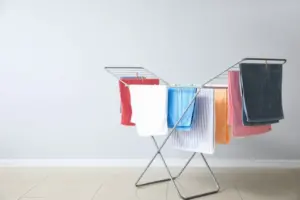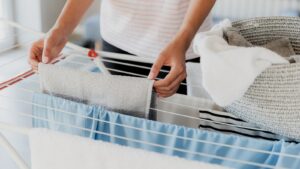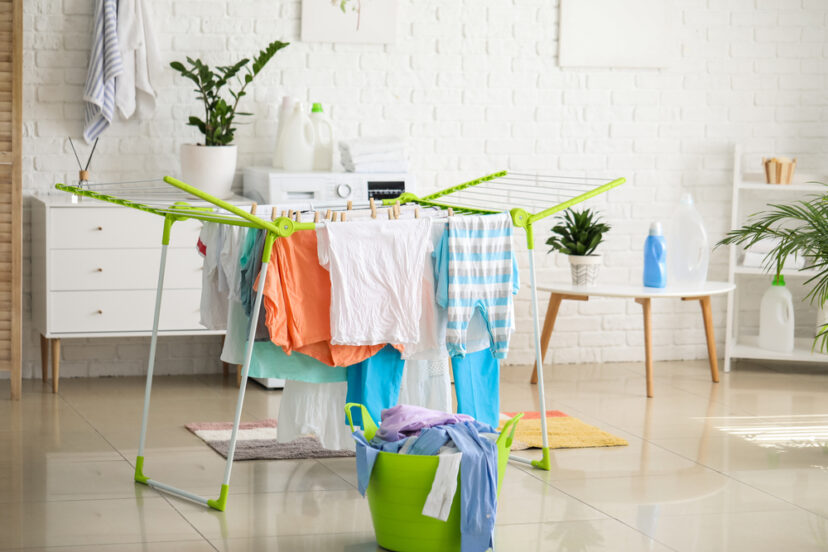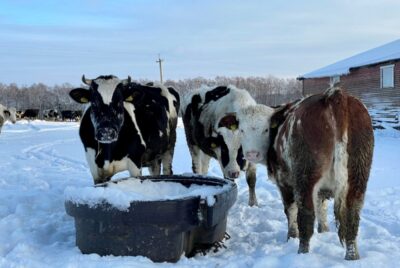Indoor Clothes Drying Racks: A Helpful Guide for Your Home
"We may earn a commission from purchases made using our links. Please see disclaimer."
Introduction
As an urban homesteading enthusiast, I’m excited to share my advice on how these handy gadgets can make doing laundry easier while saving you time, energy, and money. Keep reading for a deep dive into the benefits of indoor drying racks, what features to look for, types of racks, usage tips, and answers to common questions. Let’s get started!
Indoor drying racks are an essential homesteading tool for any urban farmer or homesteader looking to be more self-sufficient. By air drying clothing and linens instead of using an electric or gas clothes dryer, homesteaders conserve energy, reduce environmental impact, and save significantly on utility bills each month. With practical indoor racks, wet laundry can dry conveniently inside apartments and condos as well as houses.
From freestanding racks on wheels to wall or ceiling-mounted racks, quality options exist to meet every homesteader’s needs, space, and budget. Carefully choosing the right rack ensures optimal airflow, drying speed, longevity, and convenience whether you’re drying delicate intimates, heavy jeans, or bulky towels and sheets. Properly using and maintaining your drying rack further guarantees effective performance for years.
Benefits of Using Indoor Clothes Drying Racks
Save Money on Energy Costs
 Using an indoor rack to air dry clothing reduces the need to run energy-guzzling clothes dryers. This saves significantly on electricity bills each month. Clotheslines may be free, but racks are more practical inside.
Using an indoor rack to air dry clothing reduces the need to run energy-guzzling clothes dryers. This saves significantly on electricity bills each month. Clotheslines may be free, but racks are more practical inside.
In addition to financial savings, reduced energy usage yields important benefits for homesteaders wanting to shrink their environmental footprint. Every time laundry is line-dried indoors rather than machine-dried, less fossil fuels are burned to generate power.
Scale up these small energy savings by using racks daily instead of running multiple loads in an electric dryer each week, and suddenly you are conserving a substantial amount of resources over months and years. Being a good steward of the planet starts with small, conscious choices at home like using racks judiciously.
Less Wear and Tear on Clothes
The tumbling and heat of dryers can fade colors, create lint, and break down fabrics over time. Air drying preserves the look and feel of items longer. Delicates like sweaters, tights, and dresses stay nicer. By gently drying laundry without extreme heat or friction, indoor racks prolong the lifespan of all fabrics. Clothing resists forming pills and streaks from rubbing against other items. Without exposure to excess heat over years of machine drying, colored garments stay vibrant and whites stay bright longer. Fabrics also avoid extreme dryness and brittleness that makes them tear or split more easily when worn or washed again. This preserves the structural integrity of clothing and linens over more uses.
Eco-Friendly
Racks don’t require electricity or release carbon emissions. This makes them a greener solution than dryers if you want to reduce your environmental impact. As sustainability goes mainstream, eco-conscious consumers prefer products like drying racks that don’t consume resources or spew greenhouse gasses into the atmosphere with each use. Racks supporting clean living align well with the values of modern homesteaders who grow their own vegetables, compost food waste, or make their own non-toxic cleaning products. Using racks enables urban farmers to walk their talk each day by making small, green choices at home with large collective effects. Air-dried laundry symbolizes self-sufficient homemakers building homesteads focused on independence from th
Key Features to Look for in an Indoor Drying Rack
 Selecting the right rack for your needs ensures optimal performance. Here are the key criteria to keep in mind while shopping. Sturdy and stable racks engineered from quality materials such as stainless steel tubing withstand years of regular use without rust, corrosion, or breakage issues. When evaluating options, carefully inspect joinery like welded corners and rubberized feet to confirm long-term durability. Seek racks rated for substantial weight capacities, with non-skid feet or locking casters that keep them steady when loaded with heavy wet laundry. Wobbling racks that seem flimsily or lightweight likely won’t provide the rugged dependability homesteaders need from essential equipment earning its keep daily.
Selecting the right rack for your needs ensures optimal performance. Here are the key criteria to keep in mind while shopping. Sturdy and stable racks engineered from quality materials such as stainless steel tubing withstand years of regular use without rust, corrosion, or breakage issues. When evaluating options, carefully inspect joinery like welded corners and rubberized feet to confirm long-term durability. Seek racks rated for substantial weight capacities, with non-skid feet or locking casters that keep them steady when loaded with heavy wet laundry. Wobbling racks that seem flimsily or lightweight likely won’t provide the rugged dependability homesteaders need from essential equipment earning its keep daily.
Sturdy and Stable Construction
Seek metal or wood racks with a rigid, durable frame that can handle heavy wet laundry without buckling or shaking. Plastic may seem flimsier. look for quality joinery and hardware.
Adjustable Height Settings
Choose a rack with adjustable legs so you can customize the height as needed for clearing counters or accommodating large items. The ideal drying height reduces back strain by bending over a rack that sits too low to the floor. Lifting sopping wet sheets or denim up over your head risks injury as well. Finding a rack allowing you to dial in the perfect working height for laundry tasks in multiple rooms makes using it more comfortable and safer at any age.
Sufficient Drying Space and Bars
Opt for more drying room with multiple tiers or rows of bars to hold larger loads. Focus on horizontal space too for things like sweaters. Maximize what you can dry per batch by selecting racks with the greatest square footage capacity your space reasonably allows. Measure your laundry areas first. Consider equipment with drying rods that slide in and out or fold down when not fully loaded to conserve occupied floor space. Drying large specialty items like comforters may necessitate pulling out auxiliary rods from time to time.
Foldable and Movable
If storage space is tight, find a rack that folds flat vertically or compacts in other ways. Added mobility like wheels also makes a difference.
Different Types of Indoor Drying Racks
 Freestanding racks lend flexible placement anywhere needed, then tuck neatly out of the way. Wall-mounted racks are ideal for smaller living spaces lacking floor area to spare. Track-mounted ceiling racks with pulley systems maintain accessibility for users of any height to load and unload laundry while keeping floors obstruction-free. Laundry room racks neatly situate drying functions within laundry workflows adjacent to machines. Carefully weigh your family’s routines, storage realities, layout constraints, and drying needs to identify the ideal rack type for your homestead. Specialized racks address drying particular garments or accessories. Accommodate all your laundry with dedicated delicates drying racks, sweater racks, glove dryers, and more. There are diverse options when selecting a style that perfectly suits your home. Consider these popular categories:
Freestanding racks lend flexible placement anywhere needed, then tuck neatly out of the way. Wall-mounted racks are ideal for smaller living spaces lacking floor area to spare. Track-mounted ceiling racks with pulley systems maintain accessibility for users of any height to load and unload laundry while keeping floors obstruction-free. Laundry room racks neatly situate drying functions within laundry workflows adjacent to machines. Carefully weigh your family’s routines, storage realities, layout constraints, and drying needs to identify the ideal rack type for your homestead. Specialized racks address drying particular garments or accessories. Accommodate all your laundry with dedicated delicates drying racks, sweater racks, glove dryers, and more. There are diverse options when selecting a style that perfectly suits your home. Consider these popular categories:
Freestanding Racks
These versatile and movable racks stand alone, often with an X-shaped or accordion-style frame. They offer generous drying room for families.
Wall-Mounted Racks
Great for condos or apartments, wall racks attach right over machines or against other empty vertical spaces to maximize room.
Ceiling-Mounted Racks
Like wall racks, ceiling racks anchor overhead and out of the way. A pulley system lets you raise and lower for loading and unloading.
Laundry Racks
Laundry room racks mount to or beside washers and dryers for continuous workflow. Stationary or retractable options exist.
Specialty Racks
Get racks designed just for particular items like sweaters, socks, lingerie, shoes, gloves, hats, and more. Choose your must-haves.
Tips for Using an Indoor Drying Rack
 Allow racks to fully air dry before folding or stowing to prevent trapped moisture from becoming mildew. Periodically sanitize racks by power washing or disinfecting. Use rack covers when not in use to control dust. Supplement racks with portable fans, air filters, or dehumidifiers if your environment lacks adequate active ventilation. Maintain racks by tightening loose screws or hardware over time. Freshen air by opening windows whenever drying laundry. Experiment with laundry additives like wool dryer balls in place of chemically-laden dryer sheets full of synthetics and toxins crossing into your skin. Enjoy the pleasant aromas infusing clothing naturally without fragrances, like line-dried sheets gently scented by outdoor breezes. Once you’ve purchased an indoor drying rack, here are my top tips for getting the most out of it:
Allow racks to fully air dry before folding or stowing to prevent trapped moisture from becoming mildew. Periodically sanitize racks by power washing or disinfecting. Use rack covers when not in use to control dust. Supplement racks with portable fans, air filters, or dehumidifiers if your environment lacks adequate active ventilation. Maintain racks by tightening loose screws or hardware over time. Freshen air by opening windows whenever drying laundry. Experiment with laundry additives like wool dryer balls in place of chemically-laden dryer sheets full of synthetics and toxins crossing into your skin. Enjoy the pleasant aromas infusing clothing naturally without fragrances, like line-dried sheets gently scented by outdoor breezes. Once you’ve purchased an indoor drying rack, here are my top tips for getting the most out of it:
Location and Ventilation
Place racks in sunny, warm corners of rooms to aid drying. Draw curtains for privacy. Ensure air circulates around racks. Use fans or dehumidifiers to prevent mustiness. Strategically situate racks in warmer areas of living spaces near heat vents or woodstoves to accelerate drying times. Maximize natural sunlight exposure by placing racks along exterior house walls or adjacent to bright windows.
Supplement warming effects of radiant light by directing portable space heaters toward racks. Ensure ample airflow circulation to prevent odor-causing bacterial buildup on damp textiles. Use silent running fans to actively ventilate air. Dehumidifiers also extract moisture from the air limiting chances for mold growth in humid conditions.
Prepping and Loading Clothes
Shake wet items to loosen them and load them loosely so air flows between them. Hang delicates by the straps or cuffs. Lay sweaters flat. Grouping like items helps. Before loading racks, thoroughly shake out soaked laundry to prevent bundling excess moisture into fabrics instead of evaporating. Check for debris like pet hair or residue needing removal before drying. Unroll rolled items and unravel balled-up pieces to maximize surface area exposure. For the fastest drying, load items singly without touching versus stacking. But categorize like pieces in sections by weight or thickness to gauge even dryness between comparable items when periodically checking them.
Avoid Overcrowding
Resist the urge to overload racks or cram too many clothes tightly together. This inhibits drying and can cause odors or mildew. Jam packing racks choke air flow crucial for drying. Moisture gets trapped between compressed textiles, creating a damp environment ripe for microbes and fungi to multiply. These gradually damage fibers even after drying fully.
Take time to load properly, allowing each item placed in ample space and airflow to dry efficiently. Patiently wait before adding batches to racks rather than sabotaging your goal to dry laundry thoroughly without contamination or lingering moisture issues.
Check and Rotate Periodically
Periodically check racks and rotate or rearrange items for even drying. Move damper pieces to the outside. Take off fully-dried clothes promptly. Resist neglecting laundry while drying. Set reminders to vigilantly check racks every few hours. Systematically feel fabrics for cool damp spots needing more time versus warmer sections drying faster. As you discover uneven dryness, strategically rotate or shuffle clothing so inconsistently dried areas receive proportional air exposure until uniformly dry. This prevents over-drying faster-drying regions before damp zones fully dry. Remove individual pieces as they completely dry versus leaving batches sitting overweight or compressed by other laundry.
Conclusion
 I hope these insider tips on the many benefits of indoor drying racks, what to look for when buying, types to choose from, and proper techniques have shown you how these handy gadgets can make laundry day easier while saving energy and money. Bringing efficient clothes drying into your home is a smart, eco-friendly upgrade. Let me know if you have any other indoor drying rack questions!
I hope these insider tips on the many benefits of indoor drying racks, what to look for when buying, types to choose from, and proper techniques have shown you how these handy gadgets can make laundry day easier while saving energy and money. Bringing efficient clothes drying into your home is a smart, eco-friendly upgrade. Let me know if you have any other indoor drying rack questions!
FAQs
FAQ 1
How long does it take clothes to dry on a rack indoors?
Drying times vary based on factors like rack capacity, room conditions, and types of fabric. Most items may dry overnight or within 1-2 days. Heavier cotton and towels may take longer.
FAQ 2
Where is the best place to put a clothes drying rack at home?
Laundry rooms, mudrooms, and bathrooms are ideal. Seek out warm, ventilated spaces near heat vents or dehumidifiers. Avoid dank basements.
FAQ 3
Can you dry a comforter on a clothes-drying rack?
Yes, large-capacity racks can handle bedding like comforters. Look for sturdy racks with extended width and depth. Drape comforters evenly over multiple bars for airflow.
FAQ 4
Should clothes be wet or damp before putting them on a drying rack?
Clothes should be damp but not dripping wet. Wring, twist, or spin excess moisture out first. This helps expedite drying and prevents overly prolonged dampness.
FAQ 5
How do you disinfect a drying rack?
Use a disinfectant spray or diluted bleach solution. Rinse thoroughly afterwards. Ultraviolet sanitizing lamps also work. Clean monthly or when musty smells develop.





